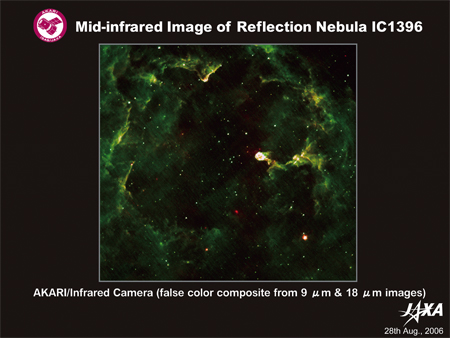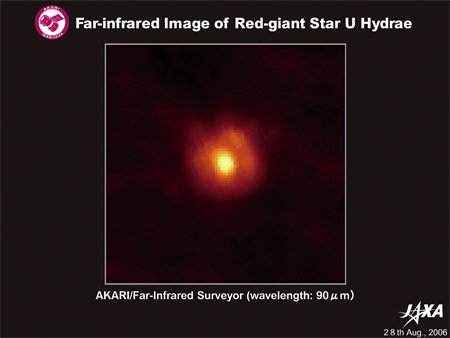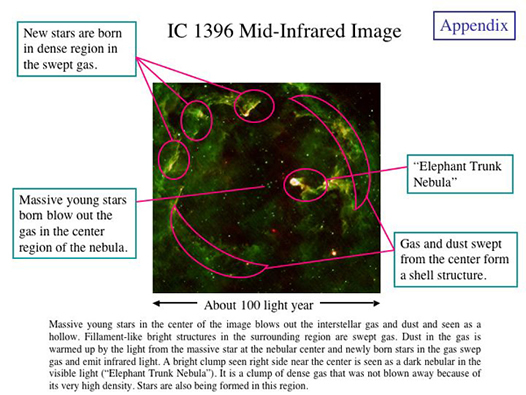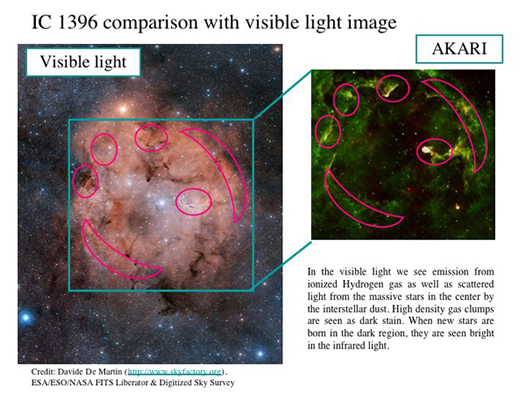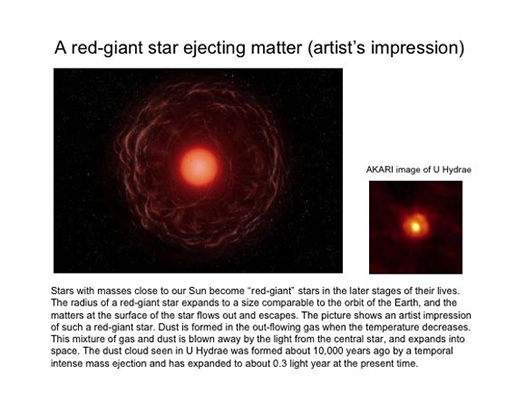TOP > Topics > 2006 > AKARI unveils the birth and death of stars
![]()
AKARI unveils the birth and death of stars
The Japan Aerospace Exploration Agency (JAXA) infrared astronomical satellite AKARI (formerly known as ASTRO-F) was launched on February 21st, 2006 (UT) from Uchinoura Space Centre, Japan. AKARI is continuing its' mission of surveying the entire sky, making a complete map of our cosmos in infrared light. Here we report two new exciting images recently made by AKARI, depicting scenes from the birth and death of stars.
1.Star-birth!
Figure 1 is an image of the reflection nebula IC 1396 in the constellation Cepheus taken by the Infrared Camera (IRC) in its' scanning mode. IC 1396 is a bright star formation region located about 3000 light years from our Solar System in a region where very massive (several tens of solar masses) stars are presently being born. Massive young stars in the central region of the image have swept out the gas and dust to the periphery of the nebula, creating a hollow shell-like structure.
The formation of a new generation of stars is now taking place within the compressed gas in these outer shell structures. AKARI has revealed for the first time, the detailed distribution of this swept out gas and dust over the entire nebula with this high resolution and quality image. Many recently born stars that were previously unknown are expected to be detected in the new image. Detailed analysis of this data will reveal the story of the star formation in this area.
|
Figure 1: Mid-infrared Image of Reflection Nebula IC1396 |
2.A star in its' death throes
Figure 2 is an image of the red giant star U Hydrae taken by the Far-Infrared Surveyor (FIS) instrument. This star is located at about 500 light years from our Sun. AKARI observations have detected very extended dust clouds surrounding this star.
Stars with masses close to the Sun will expand during the later stages of their lives becoming so called "red-giant" stars. Such stars will often eject gas from their surface into interstellar space during the final phases of their life. Dust is formed in the ejected gas, and this mixture of gas and dust expands out and escapes from the star. AKARI's superior quality and higher resolution image clearly detects a shell like dust cloud surrounding U Hydrae at a distance of about 0.3 light years from the central star. This image implies that a short and violent ejection of mass took place in the star some 10,000 years ago.
|
Figure 2: Far-infrared Image of Red-giant Star U Hydrae |
Appendix
|
|
|
August 28, 2006





